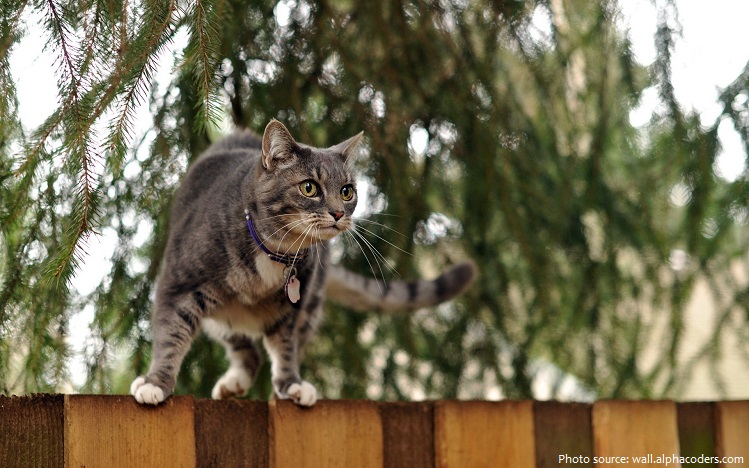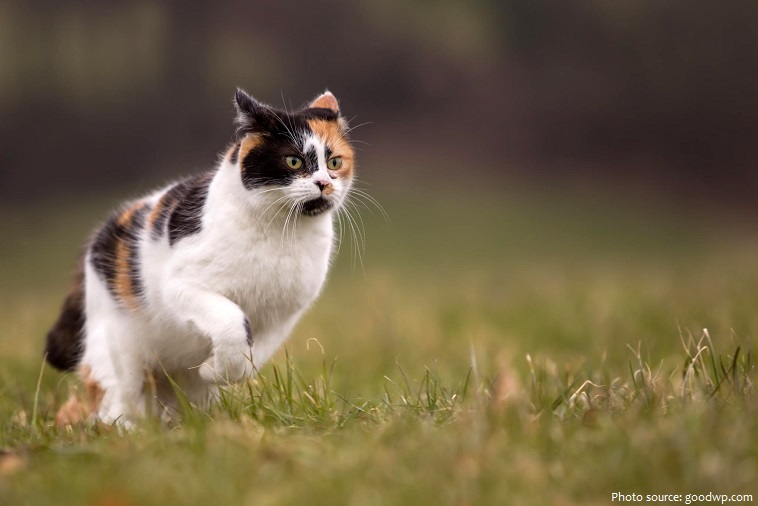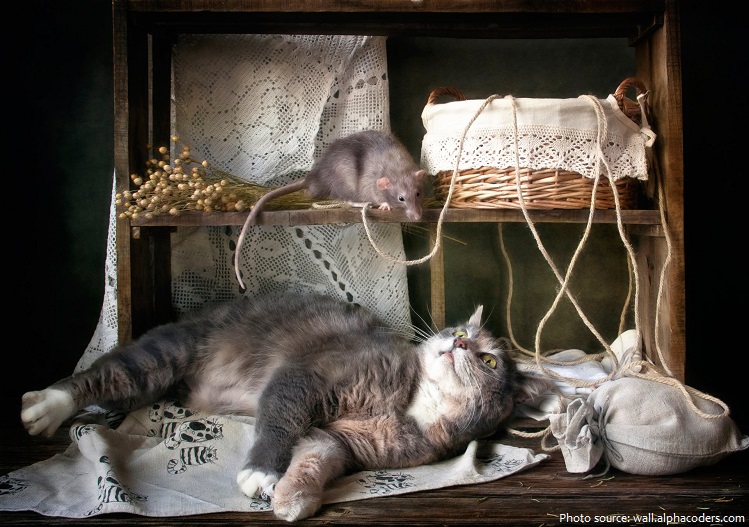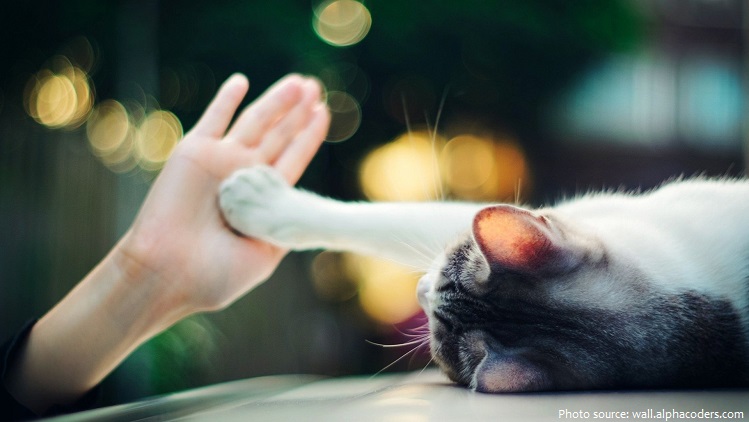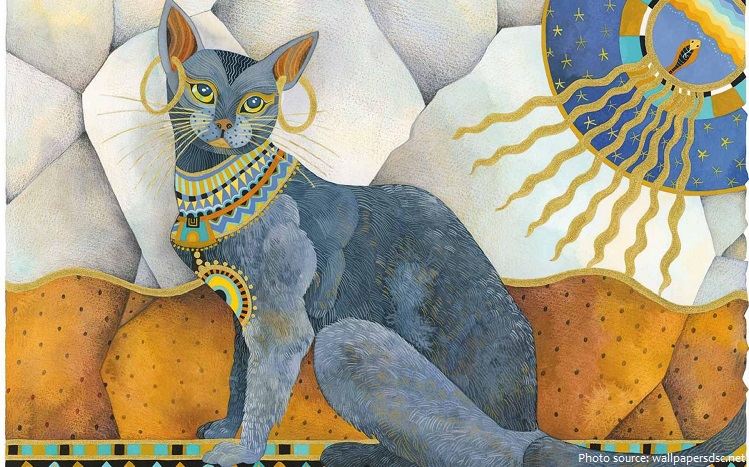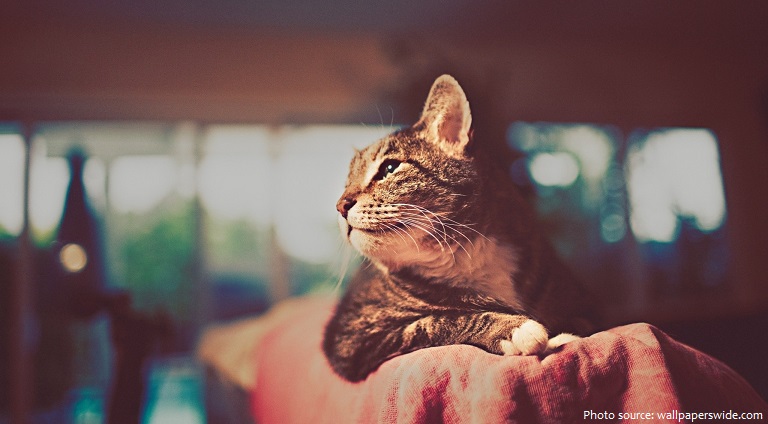The domestic cat is a small, typically furry, carnivorous mammal.
They are often called house cats when kept as indoor pets or simply cats when there is no need to distinguish them from other felids and felines.
Cats can be found on every continent except Antarctica, generally in human populated areas.
There are more than 70 cat breeds, though different associations proclaim different numbers according to their standards.
The life expectancy of a cat that is living indoors is typically 12–16 years. The life expectancy of a cat living outdoors is typically 4–5 years.
The oldest cat ever is Creme Puff who was born on 3 August 1967 and lived until 6 August 2005 – an amazing 38 years and 3 days! Creme Puff lived with her owner, Jake Perry, in Austin, Texas, USA.
Cats average about 23–25 cm (9–10 in) in height and 46 cm (18 in) in head/body length (males being larger than females), with tails averaging 30 cm (12 in) in length. They typically weighing between 4 and 5 kg (9 and 10 lb).
The longest domestic cat ever was Mymains Stewart Gilligan (aka Stewie) at 123 cm (48.5 in) long.
The heaviest domestic cat ever was Himmy, a cat from Australia, weighed 21.3 kilograms (46.8 pounds).
The smallest cat on record was a male blue point Himalayan-Persian, named Tinker Toy that measured only 7 cm (2.75 in) tall and 19 cm (7.5 in) long when full grown (aged 2.5 years).
Cats come in an amazing variety of colors and patterns. It is not unusual to see many different colors in the same litter of kittens. There are two primary colors in cats – black and red. All other colors are variations of black and red with the exception of solid white. White is a masking gene. It hides – masks – all other color. So a solid white cat is either black or red but the color is hidden by the white.
Cats have a strong flexible body, quick reflexes, sharp retractable claws, and teeth adapted to killing small prey.
They have acute sight, hearing and smell, and their sense of touch is enhanced by long whiskers that protrude from their heads and bodies. These senses allow cats to hunt effectively in dim light and at night.
Cats can see at only one-sixth the light level required for human vision. Their sense of smell is about fourteen times as strong as humans’. Although Humans and cats have a similar range of hearing on the low end of the scale, but cats can hear much higher-pitched sounds.
Cats have a whopping 32 muscles in each of their outer ears. The muscles also allow her to rotate her ears an impressive 180 degrees!
A cat’s nose is ridged with a unique pattern, just like a human fingerprint.
The top speed of a domestic cat is about 48 Km/h (30 mph). The fastest top speed of a human, set by Usain Bolt, is 44.7 km/h (27.4 mph). But a cat can only maintain this speed for a very short distance.
The longest jump by a cat is 182.88 cm (6 feet) and was achieved by Alley, owned by Samantha Martin (USA), in Austin, Texas, USA, on 27 October 2013 – According to the Guinness Book of World Records.
Cats are meat eaters, plain and simple. They have to have protein from meat for a strong heart, good vision, and a healthy reproductive system.
The domesticated cat comes for a long line of predators that had to hunt to survive. Their natural prey included birds, reptiles and small rodents, including mice. This inner predator is why your cat perks up when birds fly by the window and small cat toys to bat around are so fascinating.
Most house cats are less likely to kill mice than feral cats because they neither have to hunt any further than their food bowls to survive nor do they have access to many small creatures.
Feral cats are domestic cats that were born in or have reverted to a wild state. They are unfamiliar with and wary of humans and roam freely in urban and rural areas.
Cats are constantly called solitary creatures and that’s not accurate. Cats are social animals. Their social structure is different than that of dogs. The misconception may come from the fact that because they’re small predators they often hunt alone because they go after prey that’ll only supply enough food for one.
Domestic cats use many vocalizations for communication, including purring, trilling, hissing, growling/snarling, grunting, and several different forms of meowing. They make more than 100 different sounds whereas dogs make around 10.
They also communicate with pheromones and visual cues, such as raising the hair on their backs, moving their tails, and facial expressions.
Cats are neat freaks. They are known for spending considerable amounts of time licking their coat to keep it clean. The cat’s tongue has backwards-facing spines about 0.5 mm (0.02 in) long, which are called papillae. These contain keratin which makes them rigid so the papillae act like a hairbrush.
Some cats, particularly longhaired cats, occasionally regurgitate hairballs of fur that have collected in their stomachs from grooming. The technical term for a cat’s hairball is a “bezoar.”
Cats sleep anywhere from 16 to 20 hours a day, typically. For very young and very old cats, it’s near the upper end of the range, and newborns sleep almost 24/7.
Cats can dream. They produce the same brain wave patterns that we do when we dream.
Cats can breed all year round. The gestation period for cats is between 64 and 67 days. The size of a litter usually is three to five kittens, with the first litter usually smaller than subsequent litters. Kittens are weaned between six and seven weeks old.
Females can have two to three litters per year, so may produce up to 150 kittens in their breeding span of around ten years.
A tabby cat named Dusty, born 1935, of Bonham, Texas, USA produced 420 kittens during her breeding life. She gave birth to her last litter (a single kitten) on 12 June 1952.
The Ecology Global Network estimates that there are about 600 million cats in the world. This includes pets, strays, homeless and feral cats.
Cats have had a very long relationship with humans.
Although its origin is hidden in antiquity, the domestic cat has a history that dates possibly as far back as the origins of agriculture in the Middle East about 9,500 years ago. A cat skeleton accompanying that of a human dated to that time was discovered in southern Cyprus. This finding suggests that cats were domesticated to some degree in that location by then.
Fossil evidence found in China dating to approximately 5,300 years ago revealed that cats similar in size to modern domestic cats fed on small grain-eating animals, such as rodents, and millet in
agricultural settings. This discovery suggests that humans allowed cats to hunt mice and other rodents that threatened grain stores and possibly fed the cats or allowed them to consume leftover food.
In ancient Egypt, cats were sacred animals, with the goddess Bastet often depicted in cat form, sometimes taking on the war-like aspect of a lioness.
The Romans are often credited with introducing the domestic cat from Egypt to Europe.
Domestic cats were spread throughout much of the rest of the world during the Age of Discovery, as ships’ cats were carried on sailing ships to control shipboard rodents and as good-luck charms.
Several ancient religions believed cats are exalted souls, companions or guides for humans, that are all-knowing but mute so they cannot influence decisions made by humans.
In Japan, the maneki neko cat is a symbol of good fortune.
The ancient Egyptians shaved off their eyebrows to mourn the death of their cats.
Cats are America’s most popular pets: there are 88 million cats compared to 74 million dogs.
Owning a cat can reduce the risk of heart attacks and strokes by more than a third, researchers have found. Scientists said that having a cat helped to relieve stress and anxiety, which is known to help protect against heart disease by lowering blood pressure and reducing the heart rate.
According to the Guinness Book of World Records the most expensive cat, a Californian Spangled Cat was bought for $24,000 (£15,925) in January 1987 and was the display cat from the Neiman Marcus Christmas Book of 1986.
When Ben Rea (UK) died in May 1988, he bequeathed his £7-million ($12.5-million) fortune to Blackie, the last surviving of the 15 cats he shared his mansion with. The millionaire antiques dealer and recluse refused to recognize his family in his will and split the majority of his wealth between three cat charities, with the instruction to look after his beloved pet.
Stubbs (April 12, 1997 – July 21, 2017) was a cat who was the mayor of Talkeetna, Alaska from July 1997 until his death.
The CIA spent $20 million in the 60s training cats to spy on the Soviets. The first spy cat was hit by a taxi.
In 1963, a cat called Felicette became the first feline in space.
In Korea and Japan, there is a Cat Cafe where you can go to drink coffee and hang out with cats for hours.
Abraham Lincoln loved cats and once let one eat from the table during a formal White House dinner.
The cat with most toes is Jake, who has 28 toes – seven on each paw – as counted by a veterinarian on 24 September 2002. Jake lives in Bonfield, Ontario, Canada, with his owners Michelle and Paul Contant.


